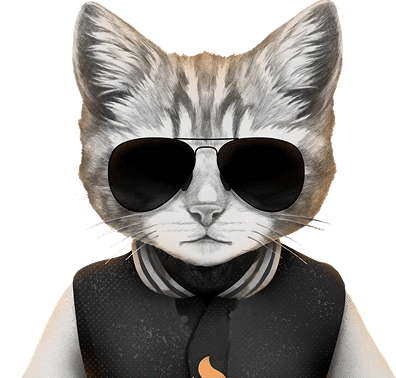
While AI can help speed up workflows and boost efficiency, it also opens the door to missteps that can quietly damage how people see your brand. We covered this topic because we want marketers to think critically about how they use AI; not just for what it can do, but for how it might be received. This article is here to help marketers stay ahead of that risk by using AI with intent, understanding what’s at stake, and making brand safety a priority before reputation is on the line.
AI-generated influencers look futuristic and cost-efficient, yet studies show they can rattle audience trust faster than a human creator ever could. Nearly 37% of marketers already worry these virtual faces feel inauthentic, and experiments reveal that when an AI influencer slips up, the brand - not the avatar - takes the blame. This guide unpacks the research, the psychology behind the “uncanny valley,” and real-world campaigns that prove the risks are manageable when you plan for them.
Newly-adapted technologies never come without rough patches. Remember when computers were first developed and commercialized? The public had to go through a long process to understand and get used to their existence. Well, history keeps repeating itself, and influencer marketing is no exception.
Since artificial intelligence (AI) technology has become accessible to almost everyone, its involvement in influencer marketing shows no signs of slowing down. Even now, influencers, who are the heart and soul of influencer marketing, have a new variant: AI influencers. These influencers are AI-generated, human-like, and seem to have lives of their own, just like real human influencers.
Their presence is often seen as an advancement in technology and a great option for brands’ marketing campaigns, but the reality is more complicated from the customer’s perspective. AI influencers are perceived as closer to inauthentic, less emotional, and to some extent, can affect a brand’s reputation negatively. While AI influencers can be a solution, it’s important for brands to look both ways and decide the next wise thing to do.
Let’s explore what some studies say about the risks of collaborating with AI influencers to brand trust, compare how society’s reactions to AI influencers versus human influencers, discuss the reasons behind that, and highlight some successful AI influencer marketing campaigns you can learn from.
Key takeaways:
36.7 % of marketers doubt AI influencers can build real trust, and 19 % fear consumer mistrust will rise.
Audience tests show mistakes by an AI influencer hurt brand credibility more than identical errors from a human creator.
AI accounts draw 3.7 × more negative sentiment than comparable human profiles (3.87 % vs 1.06 %).
Human-like yet not-quite-human visuals trigger discomfort, but active social cues like replying to comments, live Q&As ease that tension.
AI influencers work better for functional items, meanwhile experience goods that rely on emotion (fragrance, fashion) still benefit from human storytellers.
Early signs show that brands who are open about their use of AI tend to earn more trust, such as Samsung, Vogue, and Coach.
Mitigation basics: Transparency, sentiment monitoring, and clear crisis plans keep AI partnerships from backfiring.
What studies say about the risks of AI and virtual influencers for brand trust
While AI influencers promise scalability, consistency, and more brand control, Influencer Marketing Report July 2024 by Influencer Marketing Hub shows that 36.7% of marketers are concerned that this ‘breed’ of influencer lacks authenticity. Additionally, 19% of them also worry that working with AI influencers may raise consumer mistrust.
A new study by a researcher from Northeastern University offers an even more interesting finding: AI-powered influencers are perceived to have lower mind perception compared to human influencers. This means, people don’t see AI influencers as having feelings or thoughts; 180 degrees different from how they perceive human influencers. Then, what does this affect? Well, the answer is brand trust.
Here’s why: Imagine a campaign doesn’t go well due to some mistakes done by the influencer. From the study, it’s found that consumers tend to blame human influencers more than AI influencers when this happens. This isn’t because they don’t trust human creators, but because they see humans as having more “mind” (e.g. intention, emotion, and experience) than AI. With this perception, the audience expects human influencers to be smarter and avoid mistakes through their thinking process. But the good news is that the audience is more likely to forgive the brand in this case.
On the other hand, when an AI influencer is blamed, the brand suffers more loss of trust than if a human influencer made the mistake. The reason for this is that people don’t see AI influencers as having feelings or thoughts. So, it’s more difficult to assign blame to them directly. One mistake can create a psychological distance that weakens emotional connection and trust. This means, AI mistakes hit the brand harder and may affect its reputation.
Sian Joel-Edgar, who led this study, even gives an example, “In the case of a human influencer,” she explains, “the brand could dissociate themselves and say, ‘That was the human just saying that and they made an error’. However, if it was a virtual influencer saying it, people would not think it was an error. They would think that had been pre-built in and that it was the brand that was at fault there.”
To back up this research, a study by Veronica L. Thomas and Kendra Fowle, titled “Close Encounters of the AI Kind: Use of AI Influencers As Brand Endorsers” shows that both celebrity (or in general, human) and AI influencers are viewed equally positively, until a mistake happens. According to the study, mistakes made by an AI influencer lead to negative brand perceptions and decreased consumer trust. Further, if one AI influencer commits a transgression, consumers tend to believe all AI influencers might behave similarly. This means the negative impact extends beyond a single AI figure.
Another study that supports the findings of the two earlier researchers is “AI-driven influencer marketing: Comparing the effects of virtual and human influencers on consumer perceptions”. It revealed that both human and AI influencers were rated similarly in terms of credibility and expertise, and using either of them doesn’t have a significant effect on purchase intention. The only significant difference was in likability, where AI influencers were rated less likable compared to human influencers. This is because they are seen as more robotic and less emotionally engaging, while humans are perceived as authentic and trustworthy.
How does sentiment differ between human influencers and AI influencers?
To better understand how people perceive AI influencers compared to human influencers, we conducted a little sampling. We selected 10 Instagram accounts of AI influencers and 10 Instagram accounts of human influencers. We picked some of the most popular AI influencers currently, and used HypeAuditor’s Look Alike feature to find human influencers with similar niches and audience sizes for comparison. Then, we analyzed the sentiment between both types of influencers to determine which one has more positive sentiment.
 This chart was created using ChatGPT
This chart was created using ChatGPT
 This chart was created using ChatGPT
This chart was created using ChatGPT
The results: AI influencers received 3.87% negative sentiment on average, which is 3.7 times more than the 1.06% negative sentiment that human influencers received on average. This suggests that AI influencers face more skepticism or mixed reactions, which could affect how trustworthy audiences perceive the brands they represent.
However, not all AI influencers are viewed equally. Rozy (@rozy.gram) and Milla Sofia (@millasofiafin) had close to zero negative sentiment, which shows that they have likely reached the right market fit that accepted them positively. In contrast, Lu do Magalu (@magazineluiza) had 11.11% negative sentiment, 52.08% neutral sentiment, and only 26.81% positive sentiment. This could indicate brand fatigue (as Lu do Magalu is Magazine Luiza's branded AI representative) or a lack of emotional connection between this AI figure and her followers, despite being one of the longest-running AI influencers.
From this sampling, it can be seen that AI influencers don’t completely ruin brand trust, but they tend to have higher negative or neutral sentiment compared to human influencers. While most brands usually aim for higher positive sentiment, some of them may be willing to accept higher neutrality or slight negative sentiment if the AI influencer delivers strong brand recall or fits a certain identity, such as futuristic or techy.
Uncanny Valley: the reason why some people feel uneasy about AI influencers
One possible explanation for the mixed sentiment toward AI influencers is the psychological phenomenon known as the "Uncanny Valley." It is a term coined by a Japanese robotics professor Masahiro Mori, which refers to the discomfort people feel when a digital or robotic figure looks almost, but not quite human.
When a human-like figure becomes more human-like, our affinity usually increases up to a certain degree, until it reaches a point where it changes significantly. This shift from positive to negative usually happens when an AI entity becomes very close to human-like, but still isn’t perfect. As the AI entity’s appearance continues to become less distinguishable from the real human being, the emotional response becomes positive once again and approaches human-to-human empathy levels. This steep decrease followed by a steep increase is the reason it’s called a “valley”.
According to science, Uncanny Valley happens because when we see something that appears human but actually not, something about it feels slightly off. Maybe because the skin looks too smooth, the facial expressions aren’t natural, or its movements are stiff. It's close enough to humans that our brain thinks it should behave like one, but it doesn't quite match up, and that gap between what we expect and what we see makes us feel uneasy or creeped out.
These feelings often happen to AI influencers, where these figures are portrayed as having their own lives, friendships with famous figures, hobbies, or even brand collaborations. But in reality, we know they don’t exist. Because of this, Uncanny Valley has become something unavoidable for some people, if not most.
A study revealed that doll-like virtual influencers like Nobody Sausage had higher engagement than more human-like AI influencers like Imma. This result can also be tied to the Uncanny Valley effect. Doll-like virtual or AI influencers are clearly not human, which makes it easier for people to accept as they don’t closely mimic humans and can present fun personas. Meanwhile, human-like AI influencers often trigger the effect due to discomfort or confusion people may feel when seeing them. This means, not all AI influencers trigger Uncanny Valley - only those that appear distant, human-like but still feel fake and emotionally detached.
Meanwhile, a 2024 publication titled “Will virtual influencers overcome the Uncanny Valley? The moderating role of social cues” revealed an interesting point. When virtual beings (in this context, influencer) look too much like humans, they can make people feel uncomfortable, which in turn make consumers less likely to trust the brand or engage with the influencer. But, social cues like responding to comments or having conversations can mitigate the uncanniness since it helps make them more relatable and less eerie. This reduces the discomfort people might feel.
For marketers collaborating with AI or virtual creators, it's recommended to balance anthropomorphic features with social interactions to enhance customer acceptance and foster positive engagement.
Despite the discomfort some people may feel due to the Uncanny Valley effect, the reasons why some people are okay with the fact that AI influencers are not fully controllable or real haven’t been fully studied. Even though AI influencers may trigger the Uncanny Valley effect for some, they still manage to gain a big following and keep their audience engaged.
Successful campaigns involving AI influencers marketers can learn from
With mixed reception from the public, brands must be careful in considering AI influencers to promote their products or services. But, this doesn’t mean you shouldn’t consider AI influencers at all, since there are areas where they outperform human influencers and can help you achieve higher targets. One source even mentioned that switching from human to AI influencers can save campaign budgets by 30% since there are no travel or logistics expenses needed.
If you have weighed the strengths and weakness of AI and human influencers and are ready to take the leap into working with AI influencers, here are some successful campaigns you can learn from:
1. Samsung x Lil Miquela
 Back in 2019, Samsung partnered with Miquela for a Galaxy campaign, where she joined #TeamGalaxy alongside notable celebrities like Steve Aoki and Millie Bobby Brown. This campaign successfully united Samsung as a tech brand with Miquela’s nature who was ‘born’ from the AI technology. In her caption, Miquela openly acknowledges her identity as a robot, which keeps the campaign honest and authentic. This campaign was a huge success with 126 million organic views and 24 million engagements. Samsung’s Instagram mentions also rose by 12% which only increased the success of this collaboration.
Back in 2019, Samsung partnered with Miquela for a Galaxy campaign, where she joined #TeamGalaxy alongside notable celebrities like Steve Aoki and Millie Bobby Brown. This campaign successfully united Samsung as a tech brand with Miquela’s nature who was ‘born’ from the AI technology. In her caption, Miquela openly acknowledges her identity as a robot, which keeps the campaign honest and authentic. This campaign was a huge success with 126 million organic views and 24 million engagements. Samsung’s Instagram mentions also rose by 12% which only increased the success of this collaboration.
2. Vogue x Shudu
 Shudu, the world’s first digital supermodel, began collaborating with Vogue as early as 2017. The most notable and highly publicized collaboration between them was the Vogue Live - AI Summit in June 2024. Shudu not only appeared on the cover of the renowned fashion magazine, but also interacted live with the audience. Yes, she converses with attendees using an avatar in real-time, participated in panel discussions, and answered questions with authenticity and spontaneity. This collaboration showcased the technical possibilities of making AI and virtual influencers appear ‘live’ in events and media, which are considered highly successful in terms of innovation and industry impact.
Shudu, the world’s first digital supermodel, began collaborating with Vogue as early as 2017. The most notable and highly publicized collaboration between them was the Vogue Live - AI Summit in June 2024. Shudu not only appeared on the cover of the renowned fashion magazine, but also interacted live with the audience. Yes, she converses with attendees using an avatar in real-time, participated in panel discussions, and answered questions with authenticity and spontaneity. This collaboration showcased the technical possibilities of making AI and virtual influencers appear ‘live’ in events and media, which are considered highly successful in terms of innovation and industry impact.
3. Coach x Imma
 Another fashion brand that used a hybrid approach in influencer marketing is Coach, where they collaborated with both human and AI influencers for the “Find Your Courage” campaign. This campaign paired Imma, Tokyo-based AI influencers with Coach’s celebrity ambassadors like Lil Nas X, Camila Mendes, Youngji Lee, Koki, and Wu Jinyan. In this campaign, Imma delivered Coach’s message of self-expression and courage which represents Coach’s campaign story.
Another fashion brand that used a hybrid approach in influencer marketing is Coach, where they collaborated with both human and AI influencers for the “Find Your Courage” campaign. This campaign paired Imma, Tokyo-based AI influencers with Coach’s celebrity ambassadors like Lil Nas X, Camila Mendes, Youngji Lee, Koki, and Wu Jinyan. In this campaign, Imma delivered Coach’s message of self-expression and courage which represents Coach’s campaign story.
According to Coach Global Chief Marketing Officer and North America President Sandeep Seth, Imma was the perfect ambassador to tell the story because she challenges the notion of what people consider as “real” today. This campaign received a positive reception from the public and consumer, who praised the brand’s creativity and forward-thinking approach.
These examples show that despite potential risks AI may pose to brand trust, these can actually be mitigated by careful collaboration. As Joel-Edgar mentions, brands should have a certain level of control over what virtual influencers say about their products to avoid backlash if consumers aren’t satisfied.
This is also important to emphasize accountability for each AI influencer’s action or content since they directly affect brand trust. Furthermore, the researchers involved in the study recommend regular monitoring and crisis communications plans to quickly address any negative publicity.
Another paper by researchers from Sungkyunkwan University, titled “The Impact of AI Influencer vs. Human Influencer on a Social Media User’s Attitude toward a Product” backs up this advice. The study not only points out that AI influencers generally have a negative effect on social media users’ attitudes, but it also explores which types of products AI influencers should promote.
The results show that experience goods, like perfumes and clothes, are particularly harmful when recommended by AI influencers since their human-like traits can cause negative emotional responses. The authors recommend marketers using human influencers to promote products that require emotional and sensory enjoyment, while AI influencers are better suited to promote a product’s functionality as they are often seen as rational and efficient, qualities that align with tech-focused products.
Other generic advice you may have heard - but important to remember - is to be honest and transparent about working with AI influencers, know your audience, involve humans in crafting messages to grasp the emotional aspect, and always consider ethical concerns in using AI. As an addition, it’s a good idea to check audience sentiment (like we did) before deciding which AI influencers to work with. Make sure they have a good reputation, high likeability, and have a positive history. You can do this using influencer marketing tools that offer sentiment analysis, such as HypeAuditor.
Looking ahead
Collaborating with AI influencers always has its own risks, whether you choose AI or human influencers. When it comes to selecting AI influencers, brands should be more careful and aware that this relatively new technology poses greater risks, especially regarding their connection with customers. Some studies have shown that working with AI influencers can indeed decrease customer trust towards a brand for several reasons.
However, many campaigns have also proven that AI influencers can help brands achieve their targets. While the uncanny valley effect does exist, our observations show that it doesn’t happen to all of them. So, I think we can agree that the middle ground is finding what to do and what to avoid in the collaboration; and most importantly:
Find the right AI influencers for your goals.
Always disclose when content is AI-generated or involves virtual influencers.
Use analytics to check how audiences already feel about a virtual creator before you sign a deal.
Encourage the AI influencer’s team to reply to comments and host live sessions to soften uncanny vibes.
Collaborate with creators who are transparent about their own AI usage.
Set alerts for sentiment spikes so you can adjust copy or pause posts at the first hint of backlash.
Prepare a crisis response script that clarifies brand values and next steps if an AI post offends or misleads.













